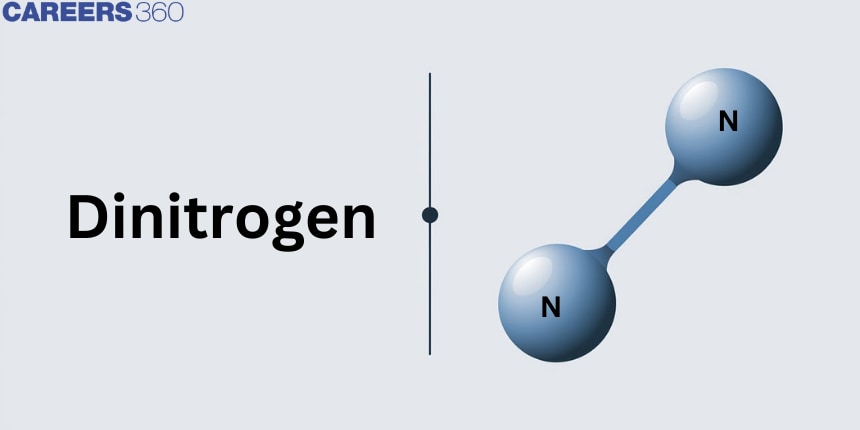Dinitrogen - Preparation, Properties And Uses
The dinitrogen comprises about 78% of the atmosphere here on Earth; hence, it is a rather very fundamental component in the Nitrogen cycle necessary for life on Earth. Abundant as it is, owing to its being an inert substance, until today it still eludes service—putting it into service, that is—without the use of inventive new methods of preparation and application.
This Story also Contains
- Preparation and Properties of Dinitrogen
- Some Solved Examples
- Summary

Preparation and Properties of Dinitrogen
Normally, dinitrogen is prepared by the fractional distillation of liquid air; this is the separation of nitrogen from other atmospheric gases, such as oxygen and argon. Another common way this can be done is through the decomposition of sodium or barium azide, NAN₃ or Ba(N₃)₂, respectively, which finally yields pure nitrogen gas. Dinitrogen is colorless, odorless, and tasteless, characterized by its high stability due to the triple bond between the two nitrogen atoms. This in turn indeed requires high energy to break the bond, making dinitrogen quite unreactive at room temperature. At high temperatures and pressures or in the presence of catalysts dinitrogen will react with other elements and make some very important compounds, for example, ammonia NH₃.
Preparation
Dinitrogen is produced commercially by the liquefaction and fractional distillation of air. Liquid dinitrogen (b.p. 77.2 K) distils out first leaving behind liquid oxygen (b.p. 90 K). In the laboratory, dinitrogen is prepared by treating an aqueous solution of ammonium chloride with sodium nitrite.
Small amounts of NO and HNO3 are also formed in this reaction; these impurities can be removed by passing the gas through aqueous sulphuric acid containing potassium dichromate. It can also be obtained by the thermal decomposition of ammonium dichromate.
Very pure nitrogen can be obtained by the thermal decomposition of sodium or barium azide.
Properties
Dinitrogen is a colorless, odorless, tasteless, and non-toxic gas. Nitrogen atom has two stable isotopes: 14N and 15N. It has very low solubility in water (23.2 cm3 per liter of water at 273 K and 1 bar pressure) and low freezing and boiling points. Dinitrogen is rather inert at room temperature because of the high bond enthalpy of N≡N bond. Reactivity, however, increases rapidly with rise in temperature. At higher temperatures, it directly combines with some metals to form predominantly ionic nitrides and with non-metals, covalent nitrides. A few typical reactions are:
Uses
- The main use of dinitrogen is in the manufacture of ammonia and other industrial chemicals containing nitrogen, (e.g., calcium cyanamide).
- It also finds use where an inert atmosphere is required (e.g., in the iron and steel industry, inert diluent for reactive chemicals).
- Liquid dinitrogen is used as a refrigerant to preserve biological materials and food items, and in cryosurgery.
Recommended topic video on (Dinitrogen) video
Some Solved Examples
Example: 1 On heating compound (A) gives a gas (B) which is a constituent of air. This gas when treated with H2 in the presence of a catalyst gives another gas (C) which is basic in nature. (A) should not be :
1)NaN3
2) (correct)Pb(NO3)2
3)(NH4)2Cr2O7
4)NH4NO2
Solution

Basic gas (C) must be ammonia (NH3). It means (B) gas should be N2 which is formed by the heating of compound (A).
(1) (NH4)2Cr2O7→ΔN2↑+Cr2O3+4H2O↑
(2) Pb(NO3)2→ΔPbO+2NO2↑+12O2↑
(3) 2NaN3→Δ2Na+3N2↑
(4) NH4NO2→ΔN2↑+2H2O↑
Pb(NO3)2 is not giving Nitrogen gas.
Example: 2 The correct statement with respect to dinitrogen:
1)N2 is paramagnetic in nature.
2)It can combine with dioxygen at 25∘C
3) (correct)It can be used as an inert diluent for reactive chemicals.
4)Liquid dinitrogen is not used in cryosurgery.
Solution
As we have learnt,
Dinitrogen is a very stable molecule with a very high N≡N bond energy and is practically inert at room temperature.
Due to its almost inert nature, Nitrogen is used as an inert diluent for reactive chemicals.
Hence, the answer is the option (3).
Summary
Dinitrogen is considered by many to be a forgotten molecule; however, it truly is one of immense importance. Dinitrogen impacts nearly all aspects of life and industry. Elucidation of the properties of a molecule as complex as this one details not only scientific but also practical implications for agriculture, medicine, electronics, and the science of the environment.